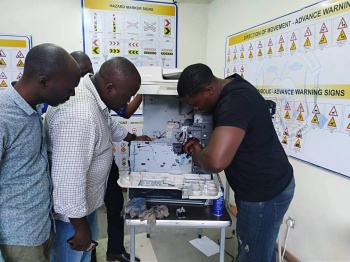Understand what support in an education setting means
This topic explores what is support in a learning environment and what different types of support should be considered in good design, and specific to the learning cohort or individual.
This topic is broken up into the following sub-topics:
- what are learning supports
- how to identify the intended cohort
- how to identify the traits of the cohort
- identify what learning supports may be needed for a cohort
What are learning supports?
Learning supports are the resources, strategies and practices needed to support your learner to meet the desired outcomes, and to achieve the individual’s potential. These may include physical, social, emotional, or intellectual supports to allow the student to meet their potential.
These include an understanding of the impact the following possible influences:
- Learning how to learn (adults as opposed to school setting)
- Technology requirements
- Face to face or small group support by the training organisation
- Understanding of medical issues and impact on study
- Understanding of presentation methods to best support learners of different needs.
The organisation that you work for may offer student support.
In Australia it is mandated that learner support is identified and provided to individual learners. The Australian Skills Quality Authority (ASQA) is the national regulator for Australian vocational education and training.
Learner support is written into their standards, see https://www.asqa.gov.au/faqs/what-learner-support-and-how-do-i-know-if-my-rto-providing-enough-clause-17 What is ‘learner support’ and how do I know if my RTO is providing enough? (Clause 1.7)
Who are your intended students?
To best support your learners to achieve the outcomes of their learning you should understand who the intended students for your course are and identify the issues which commonly impact and affect the intended cohort of students.
Language, Literacy and Numeracy (LLN)
Language, literacy and numeracy skills are variable between individuals, and groups of individuals. The language used in the presentation of learning materials should be pitched appropriately to encourage students to participate and support their learning and development and to achieve outcomes.
Early School leavers
The LLN levels of your student cohort will be influenced by the level of schooling completed successfully.
Long term unemployed
The psychological affects of long period of unemployed or forced leave from work should be considered when structuring your course to allow for initial engagement and participation to allow for growth in knowledge, skills and understanding.
Parents returning to study and work
Where the cohort includes students with family responsibilities, consider the implications associated with the time away from the family. What source and the impact the added pressure may have on the student, and their ability to complete additional hours of study. Consider the type or style of supports to be included in the design to encourage and enable completion of study.
Immigrants / refugees
Consideration of cohort experiences which may impact and influence design of course and learning supports offered. Where have the students come from? What type of situation they have left, or experienced during their transition?
Trainees or apprentices
Consideration of the demands of the workplace which overlay the study requirements and experiences.
Share with your peers in the discussion forum.
Who are your students expected to be?
What background and experiences do you expect them to have?
Discussion forum.
